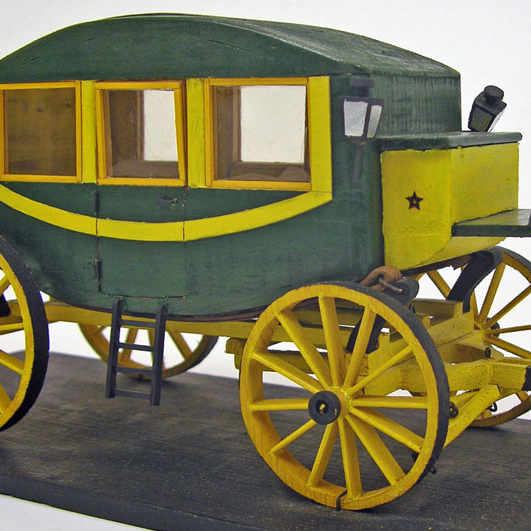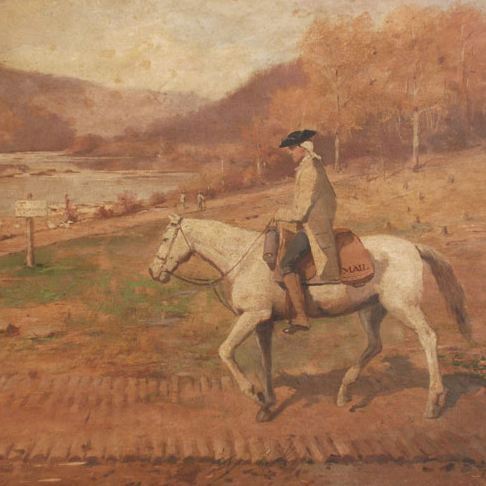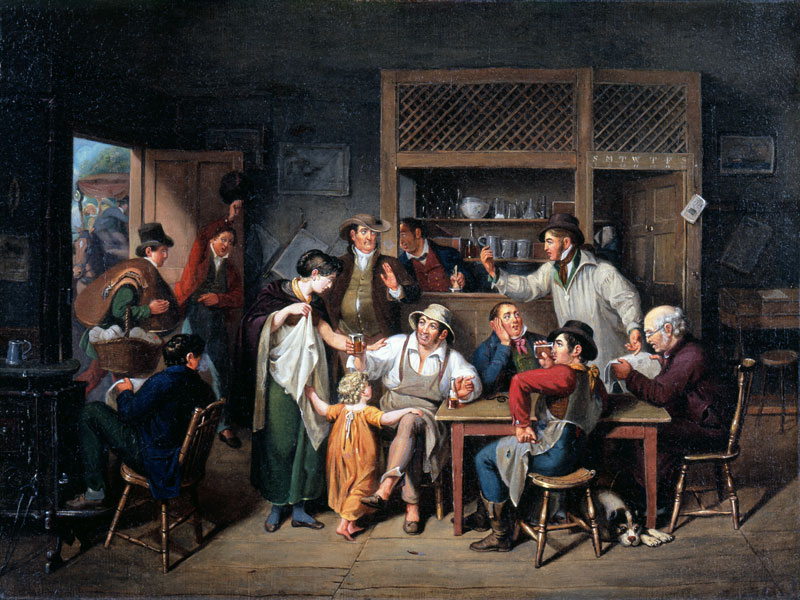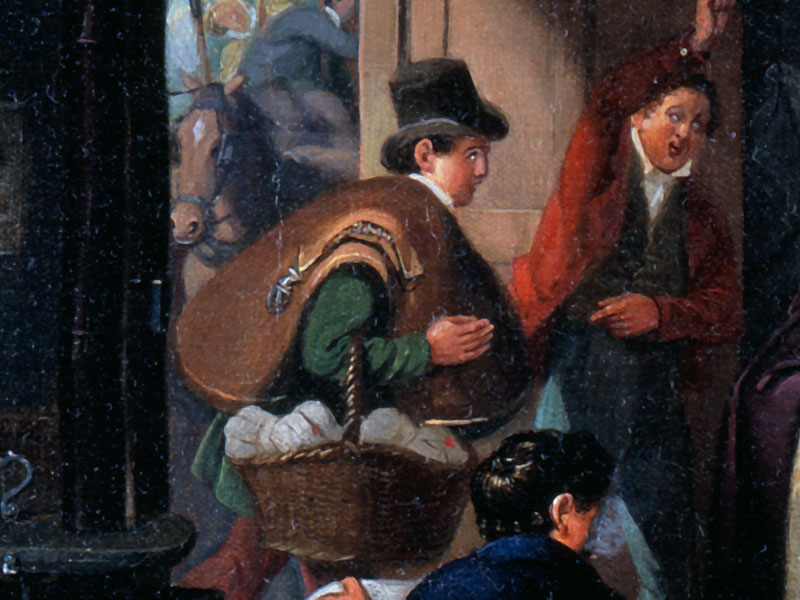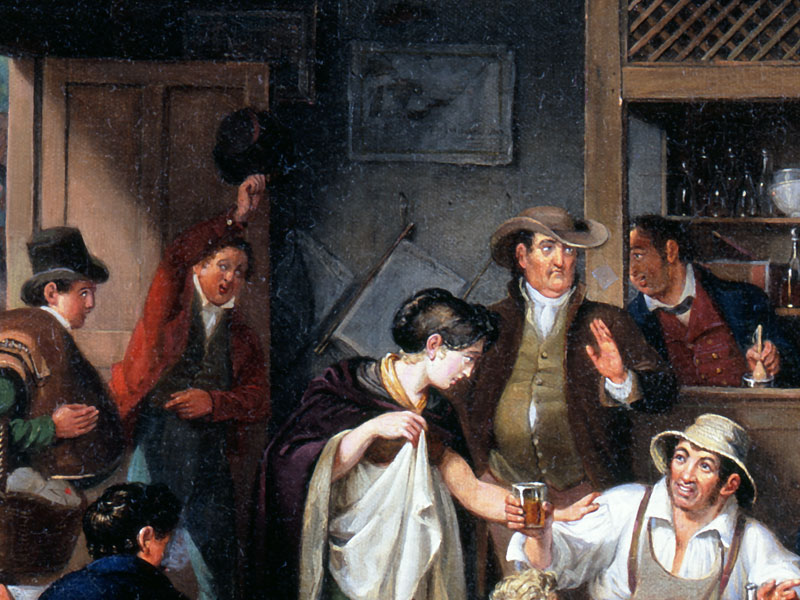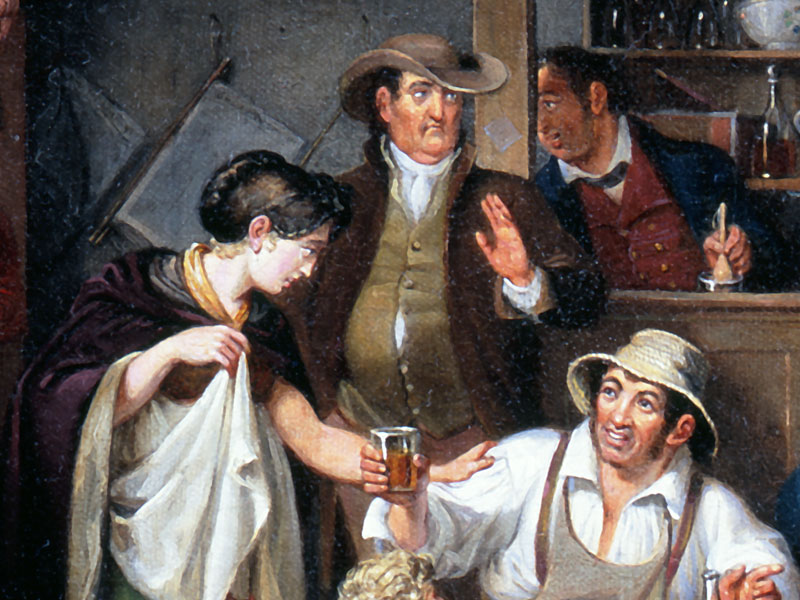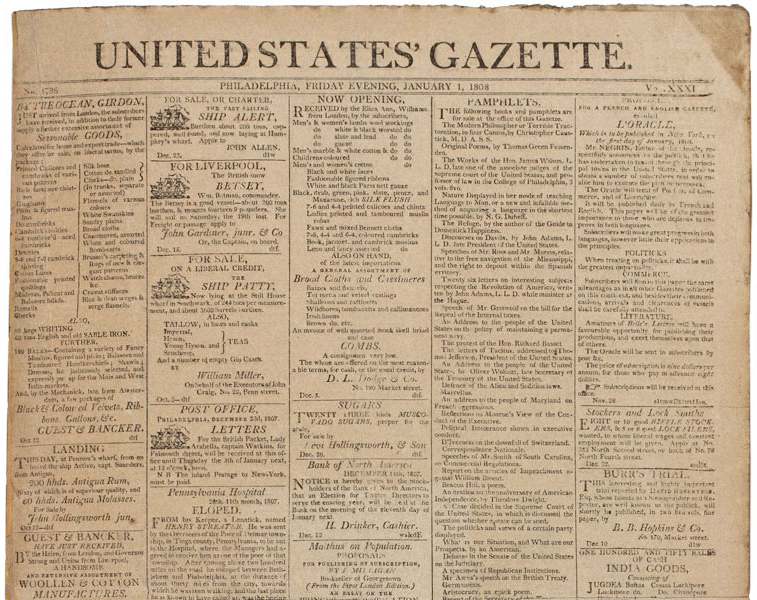
When we reflect that the objects effected by the transportation of the mail are among the choicest comforts and enjoyments of social life, it is pleasing to observe that the dissemination of them to every corner of our country has outstripped in their increase even the rapid march of our population.
—President John Quincy Adams, December 5, 1826
The official postal system of the new United States began in 1792. Over the next decade and a half, it grew faster than it has ever since. Mailing letters was expensive at first, to help subsidize the cost of mailing newspapers—the crucial long–distance information system of the times.
In 1800, postal officials began using selected post offices as distribution centers, where mail for large areas was processed and sent on. This “hub-and-spoke” system is in use again today.
The Village Tavern (and Post Office)
Private stagecoach companies held contracts to move the mail between towns. In this painting, a stagecoach driver brings letters in the leather mail pouch and newspapers in the basket.
John Lewis Krimmel’s painting from 1814 shows a man delivering mail to a tavern, which is also a post office. In small towns of the early Republic, a general store, inn, or some other business often doubled as the post office. In this image, Krimmel shows the taproom of a public house near Philadelphia. At this time, few towns had separate post offices. Patrons of all social classes eagerly await the mail; the postmaster has neatly folded older newspapers on the back wall on portable racks.
Moving the Mail
Private stagecoach companies held contracts to move the mail between towns. In this painting, a stagecoach driver brings letters in the leather mail pouch and newspapers in the basket.
Spreading the News
Patrons of all social classes eagerly await the mail; the postmaster has neatly folded older newspapers on the back wall on portable racks.
An Informal Post Office
In this image, Krimmel shows the taproom of a public house near Philadelphia that doubled as a post office. At this time, few towns had separate post offices.
Part Time Postmasters
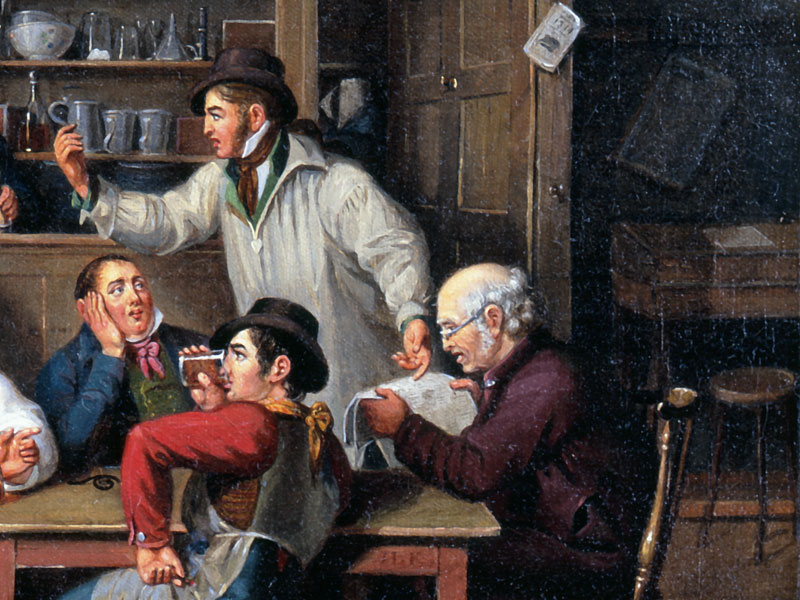
The writing desk to far right implies tavern keeper is also the postmaster, the only representative of the federal government ordinary Americans would likely meet.
A spectacle never before displayed among men. It is the spectacle, not of the learned & the wealthy only, but of the great body of people…having free & constant access to the public prints.
—Samuel Miller, minister, 1803
The Travels of the United States' Gazette
From Philadelphia to Washington, Pennsylvania
Printers in Philadelphia have Friday morning’s edition of the United States' Gazette ready to go.
A servant brings a packet of the newspapers to Philadelphia’s postmaster, Robert Patton. He records the address of the packet, puts it in a locked satchel destined for Washington, PA.

The satchel is carried to the Pittsburgh Stage Company office, and loaded on the coach with mailbags and passengers to begin a three-day journey west.
The satchel reaches the Washington post office on Sunday evening. Postmaster Hugh Wylie met the coach. Keeping the mail moving was important, even on a Sunday.
And the United States' Gazette started another journey, as patrons read the news and passed the papers along, from one family to the next.The post office and the people carried news from the nation’s biggest city across the state and beyond.
